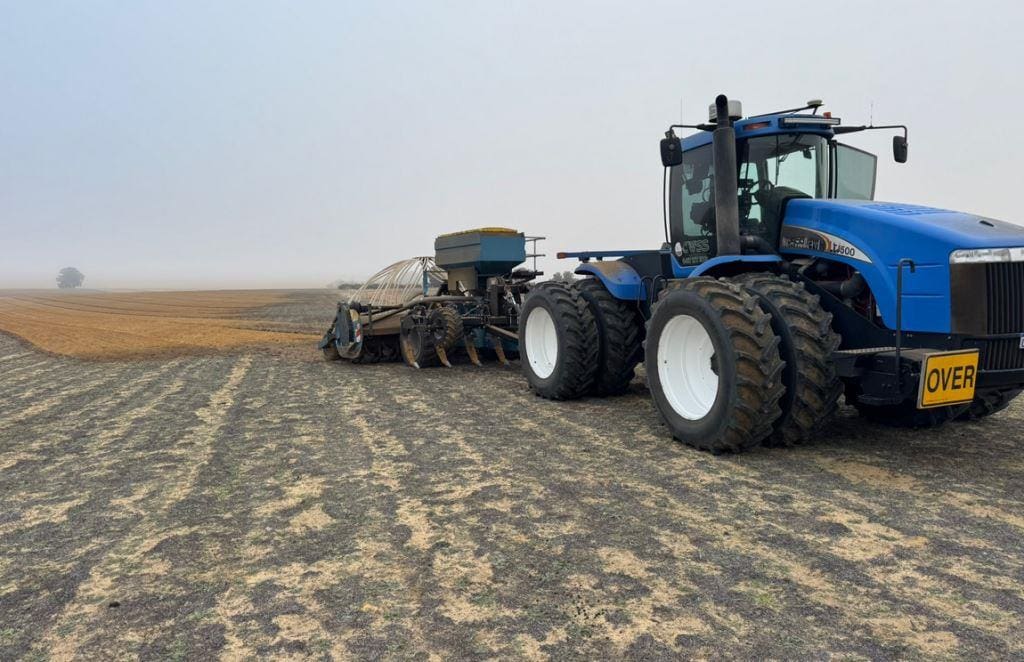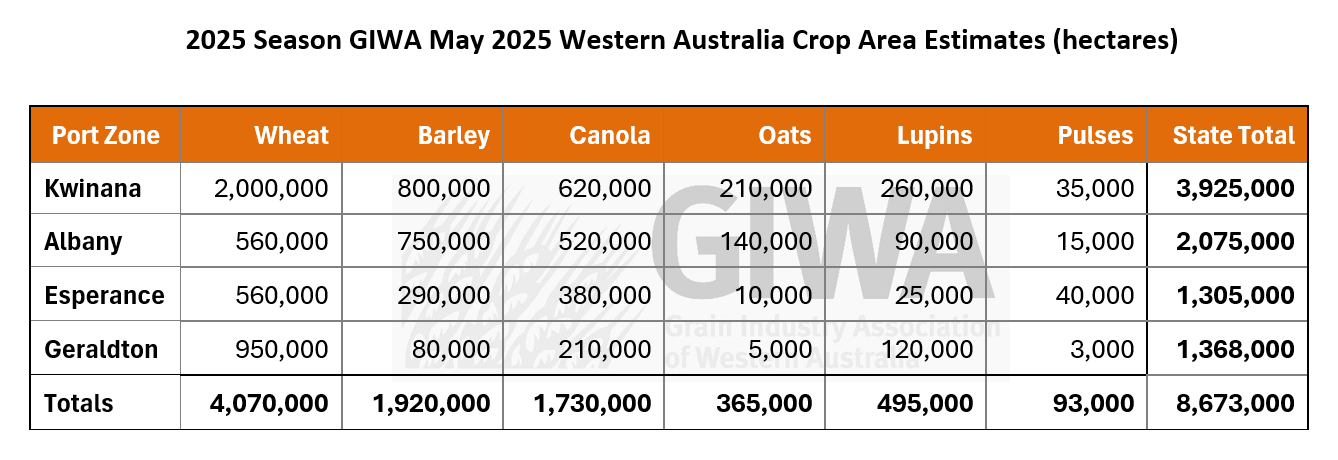
Planting wheat in the Goomalling district this week. Photo: Nathan Evans, Evanics Diesel Services
THE GRAIN Industry Association of Western Australia has trimmed its estimated area for the crop now being planted in WA to 8.67 million hectares from the 8.81Mha initially seen last month.
In its May crop report released today, author Michael Lamond said the persistent dry conditions in the top third of the state’s grain-growing regions has prompted the drop.
In WA’s southern growing regions, Mr Lamond said crops were “up and away” following several decent falls of rain in April.
“However, the northern half of the state is mostly dry with little or no crops up and no subsoil moisture available to risk sowing on the light rainfall events that have occurred,” Mr Lamond said.
It is still relatively early in the planting window, and Mr Lamond said most growers are sticking to their planned crop enterprise mix and intended planted areas for now.
“The exception to this is a pulling back on break-crop hectares in the northern agricultural regions and drier portions of the central cropping zones.”
As a consequence, canola and lupin areas are expected to be down on earlier estimates in the Geraldton port zone and the north-east Kwinana port zone.
“Fallow area in the low-rainfall regions is likely to increase if the rain holds off, reducing the total planned crop area for the state, although for now, the reduction in break crops and fallow is planned for wheat.”
Mr Lamond said the drop in crop area in the north is being compensated to some degree by extra crop area planted in the southern regions as a result of extra pasture paddocks being sown to crop, and less fallow in the low-rainfall regions.
“There is likely to be a reduction in total crop area in the central regions now due to the patchy rainfall to date.”

The report points to a slight swing back into barley in most regions this year, bringing the area up to where it was a few years ago when barley was above 20 percent of the total crop area.
Wheat area is forecast to be down a few percentage points from 2024 due to a likely reduction in overall area planted.
“Canola area is forecast to be up slightly from 2024 due to the very good start to the season in the southern regions of the state, but will be well down on the 2Mha of just a few years ago due to the dropping off in area in the very dry regions in the north of the state.”
Mr Lamond said lupin area was holding firm from some minuses in the north and pluses in the south.
“Oat area will be up again this year with most of the increase destined for grain rather than hay.
“Pulses will remain unchanged in the Esperance region and the other southern regions, although there is going to be an increase in pulses in the central regions on the back of some promising results in 2024, particularly with lentils.”
Source: GIWA
Further detail on crop conditions in individual WA port zones can be found as part of the full report on the GIWA website.

HAVE YOUR SAY